
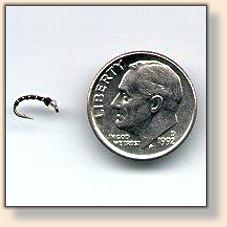 Lee's Ferry Midge By Ralph D'Andrea Colorado, USA
|
|
|
Pearl, white, or diamond bead, black thread, silver wire (pictured) |
|
Tying Instructions: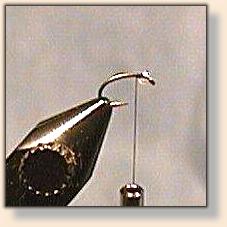 1. Place a bead on the hook, slide it forward to the eye, and set the hook in the vise. Start the thread immediately behind the bead.
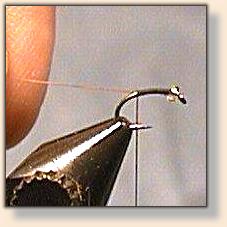 2. Tie in a length of wire on the underside of the hook, just behind the bead, and wrap closely with tying thread to halfway down the hook bend. Tip: holding the wire tight, down and away from you on the far side of the hook, will cause thread torque to pull it to the underside of the hook as you wrap..
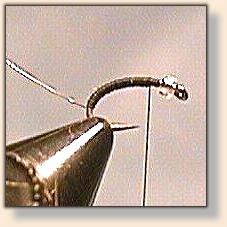 3. Wrap thread neatly forward to the bead. You should have a neat thread body, with no lumps, showing none of the underlying hook or wire.
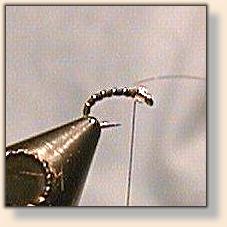 4. Wrap wire forward to the bead. Tip: be careful not to wrap too much wire. Let the thread underbody show through. Five wraps are typical for this fly. The fly looks somewhat more realistic if the wraps are a little closer at the bend end of the hook and farther apart at the bead end. Tie off the wire with 3 tight thread wraps, wiggle it back and forth, and break it off under the last thread wrap. DO NOT CUT THE WIRE. Cutting wire with your scissors dulls the scissors and creates a sharp edge on the wire that can cut the thread when the fly is fished..
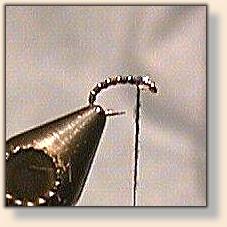 5. This step is optional, but results in a somewhat neater looking fly because it covers the wire tie-in and tie-off points and holds the bead in place. Tightly spin a VERY SMALL amount of dubbing, just a few fibers, on about ¾ inch of thread, and wrap 3-4 turns of dubbing immediately behind the bead. Alternatively, you can wrap 4 or 5 more wraps of tying thread in contact with the rear of the bead to cover this area and hold the bead in place. My local flyshop ties this area with a wrap of Micro-Brite, a pre-dubbed wire, behind the bead.
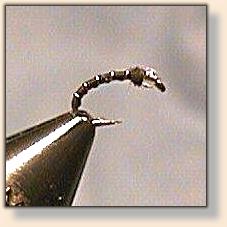 6. Whip finish and clip thread. The fly is complete.
Fishing Suggestions:
|